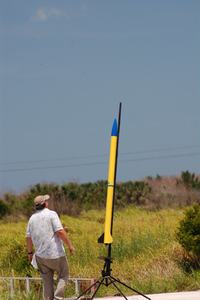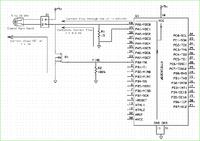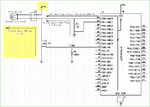dk-info
Newbie level 4

I am designing my own version of a timer designed to eject the parachute of a high powered rocket at a preset time after liftoff.
Using the circuit below as an example, I would like to determine ahead of time if I have continuity with the squib (a nichrome wire dipped in Pyrogen electric match).
With the FET off, I use a low current path (less than 1mA) through the squib, reading the voltage drop across R1 to determine if the wiring is OK.
Nominally the squib is 5Ω to 20Ω, and takes a minimum of 500 mA (usually 750 mA) to fire the squib reliably.

I am worried about the other current paths available, back from the µController, through the +5V to +9V rail... +5V is developed from 9V with a linear regulator
(LM78L05, with a 1uF/16V input, 10uF/6.3V output capacitor)
I do not understand enough of the analog workings of the µController I/O pin (ATMEGA328) to gauge if this is a big concern or is not a concern at all.
I would like to make this circuit as robust as possible; the last thing I want is for the parachute ejection charge to go off in my face when I apply power to the circuit (arm the rocket).
Any comments or ideas would be appreciated.
David W.
Melbourne, Fl.




